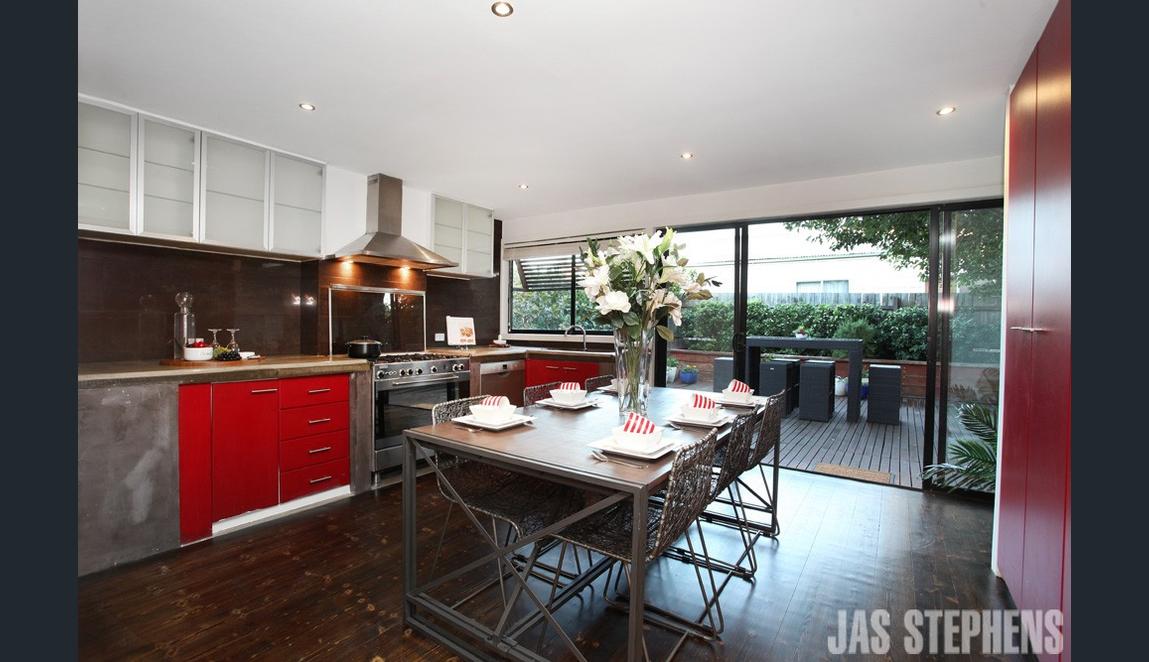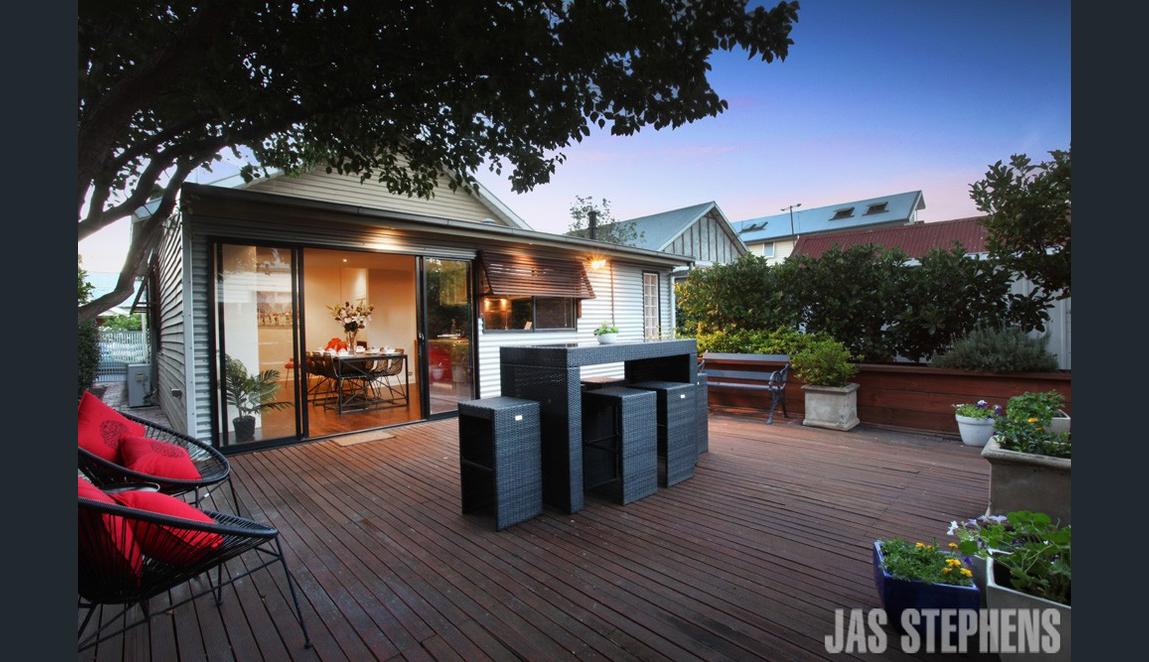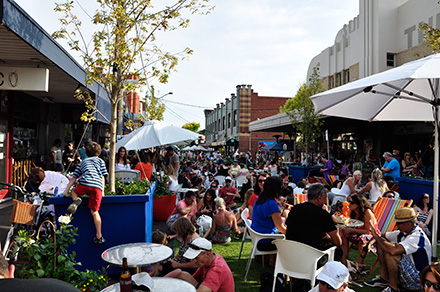Yesterday’s 11am auction at Yarraville’s Free Street was our first official auction bidding assignment for the year.
The three bedroom, modernised old house in the heart of the Yarraville Village on this quiet and hidden away little dead-end street had caught our client’s eye for more than one good reason.


The proximity to work, generous side drive offering up to three car spaces off street parking, and ‘lock and leave’ nature of the property sealed our buyer’s enthusiasm. The two minute walk into the heart of the village or the zoned primary school just thirty seconds’ walk was an enviable bonus.
We attended our due-diligence inspection and conducted our research. We were ready to bid.
In anticipation of other interested parties putting their hands up, I positioned myself where I could face them all, eye to eye in an attempt to read their nerves and bid with gusto in the face of any opponent.
As the auctioneer’s spiel concluded, I was first to call out a bid… “Nine hundred Branko!”
Surprisingly though, the next bid after a few additional calls and value-reminders, was the auctioneer’s Vendor Bid of $930,000. I was quick to counter with “$950,000” and his following desperate call was met with a crowd of arms-folded folks.
It was a bit strange, but certainly not unchartered for me. It’s not common for a reasonably popular campaign in a popular area to face a tough auction start.
When you combine this with the auction-season-start, it can produce strange buyer behaviour.
Buyers don’t love auctions. The fear of being centre stage and under immense pressure is more fearful for some than spiders or snakes. Aside from the public-speaking fear, buyers also loathe heartbreak and wasted due-diigence costs. Last year was particulalry difficult for many home-buyers and in our travels we met some buyers who had invested both emotionally and financially in more than ten properties during the course of the year. The combination of run-away sales results spurred on by motivated, cashed-up buyers, and real estate agent underquoting left many feeling disheartened.
The start of 2017 is quite different to the start of subsequent years and it is understandable why some auctions are playing out a little differently.
We have a spotlight on under-quoting and the laws have changed. In the midst of this watchdog crackdown and new regime roll-out, many buyers are either waiting it out and watching, or adopting a plan to buy once the clearer visibility on price-tags is evident.
So when the auctioneer strolled out and announced to the crowd in Free Street that he was going to pass the property in to me if no further bidding ensued, I glanced along the line of attendees carefully watching for a sign of bidder action.
I was aware that there was good opponent interest because I’d tracked the campaign…but nobody put up their hand.
I knew I had a serious conversation to have with my buyers.
They’d stood in the crowd and watched the property they were prepared to fight for pass in on a $950,000 bid. Without social proof, how were they to know that the property was even worth the starting bid of $900,000? After all, nobody else had put their hand up.
It’s an intriguing phenomenon, and it’s caught many a buyer out.
We had what many buyers don’t prepare for; rigorous comparable sales analysis on hand. We knew what past similar properties on blocks this size had sold for and we knew with pragmatism that this property should have sold in excess of a million dollars, but nobody else in the crowd had fought us for the property.
The pass-in negotiations did not immediately secure a deal. The vendors decided later in the afternoon to advertise the property for private sale at $1,050,000. I had a delicate discussion with my buyers about the risk they could take with the property if they waited for social proof. They could either be validated by their decision to hold back with a fifteen thousand dollar gap between their willing price and the vendor’s price if the property didn’t sell in the forthcoming days or weeks. Or they could risk the chance of the online private sale ad attracting willing buyers who also felt that the house represented fair market buying. If the property sold immediately to another buyer for the vendor’s asking price, would they be upset? And if the agency decided to run an ‘auction after the auction’, would they be prepared to fight for it?
I reduced the gap to $10,000 and we signed contracts two hours later. Their willingness to see past the buyer behaviour at the auction and rely on the research and analysis enabled them to secure their home or a price they were happy with.
Social proof could have cost them a lot more than $10,000 and may have even seen them miss out.
Analysis is paramount and buyers need to prepare for strange auction behaviour during this time of change in Victorian auction-quoting legislation.
 Special thanks to Amy Mylius for her cited article on Social Proof and the effect it can have on auctions.
Special thanks to Amy Mylius for her cited article on Social Proof and the effect it can have on auctions.
Photos thanks to Jas Stephens, REA and Yarraville Festival Organisation
Wishing stallholders, locals, visitors and traders a fantastic festival this weekend!
REGISTER TO OUR NEWSLETTER
INFORMATION
CONTACT US
1A/58 ANDERSON STREET,
YARRAVILLE VIC 3013
0422 638 362
03 7000 6026
CATE@CATEBAKOS.COM.AU
